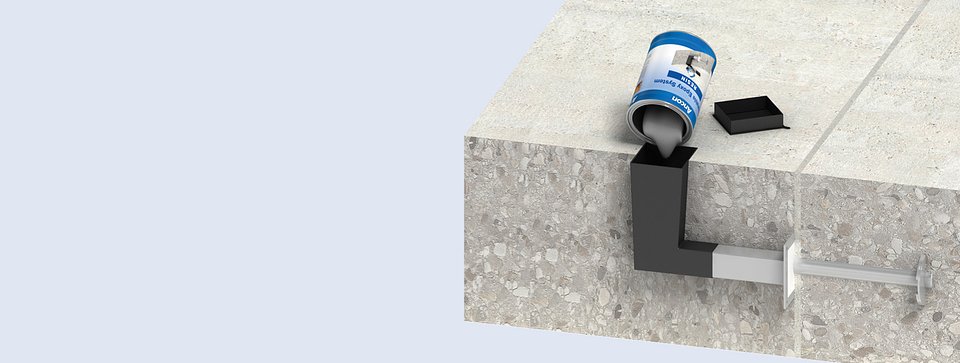
Lockable Dowel Installation Procedure
Lockable Dowels
Ancon Lockable Dowels are a proven, independently-tested solution which is both easy to detail and install on site.
Watch the installation video below for the Ancon Slab-to-Wall Lockable Dowel.

Nail the sleeve to the formwork so the top of the void former is level with the top of the slab. Do not remove the label over the nailing plate as this prevents ingress of concrete into the sleeve. Fix the local reinforcement.

Pour the concrete, and when of sufficient strength, strike the formwork. Puncture the label to reveal the cylindrical sleeve only and insert the dowel until it is approximately 20mm from the back of the void former.

Fix the local reinforcement around the dowel component and pour the concrete.

After a predetermined time period (28-120 days, specified by the design engineer), when movement between the slabs has stabilised and the joint between the slabs has been filled, the dowel is ready to be locked. Fit the Locking Plate on a groove in the centre of the void former. The fan-shaped Locking Plate allows the dowel to be locked in any position.

Mix the two-part epoxy resin and pour into the void former. It is essential the resin flows along the stainless steel box section towards the joint and reaches the notches on the locking plate, which indicate minimum resin depth. Joint must be filled before resin is installed.

After 24 hours the void former can be filled with cementitious material, level with the top of the slab, to complete the installation. The locked dowel continues to transfer vertical load between the slabs, but movement can no longer take place.
Latest News
Leviat Introduces A1-Rated Non-combustible Insulation Retaining Clip for High-Rise Projects
Leviat, global leader in engineered construction solutions, has launched the Ancon A1-ST1 insulation retaining clip, a new non-combustible, A1-rated solution specifically designed to fit the Ancon ST1 heavy duty wall tie widely used in high-rise buildings.
Leviat Sponsors Concrete Society Awards 2025
Leviat is delighted to announce its continued sponsorship of the popular Concrete Society Awards for 2025, taking place on Wednesday 12th November, at London’s Royal Lancaster Hotel.

